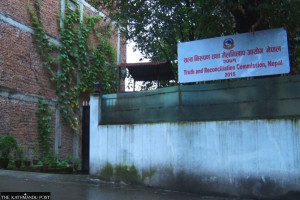Columns
Reading Nepali journals online
The uploaded content suggests that the quality of peer reviews being implemented varies.
Pratyoush Onta
Lately, I have frequently been visiting the Nepal Journals Online (NepJOL) portal to find out what Nepali journals are publishing. Officially launched in 2007 as an initiative of the Oxford-based International Network for the Availability of Scientific Publications (INASP), NepJOL is now managed by the Central Library of Tribhuvan University. In its self-description, NepJOL is “a database of journals published in Nepal, covering the full range of academic disciplines.” Its primary objective “is to give greater visibility to the participating journals, and to the research they convey….by hosting their content online.”
NepJOL now showcases over 400 Nepali journals. Many of these journals are dedicated to natural sciences, medical sciences, engineering and management. There is a sizable number of other journals which publish research in the social sciences and the humanities. Not all of these journals are “alive,” meaning new issues of some of them have not been published for years. However, they have not yet been declared “defunct” by their erstwhile editors. The portal provides general information about each journal. When new issues are uploaded, readers can read their table of contents and find the full texts of the published articles. In the case of many journals, the readers will also be able to access some or all of their back issues.
As I have written elsewhere at great length, there are many reasons why the number of academic journals published from Nepal has increased massively since 1990. To put it briefly, the expansion of higher education across the country, especially the growth in the number of MA and above degree programmes in different Nepali universities, is an important factor fuelling this growth. The journals have become platforms to publish the research work of both graduate students and the faculty teaching them.
In addition, this growth is also partially linked to the ways in which faculty performance is now evaluated in our universities. This growth also coincides with an increase in the professional differentiation of the middle class in Nepal. One of the ways in which academics all over the country have tried to mark their difference from literary writers and journalists is by publishing academic articles in journals with citations, footnotes and lists of references.
Given this huge growth, it is very difficult to get hold of all the physical copies of the journals for keeping in institutional libraries. Subscription systems are mostly non-existent. Hence, it is a great service to researchers to be able to read full texts of new journal issues in NepJOL. In making such reading possible, NepJOL has definitely provided better visibility to the journals it hosts and better access to their contents.
Contents
NepJOL states that journals are selected for inclusion in its portal if they meet the following first criterion: “They are scholarly in content, and contain original research.” When one goes through some issues of some of the social science and humanities journals now available in NepJOL, one would have to conclude that this criterion is also being applied rather liberally by the portal’s hosts and the editors of the participating journals. Without getting into the discussion about what might count as “scholarly” in content or “original” in research, it seems that as long as the journal contents are provided in the format of an academic output—articles with citations, footnotes and reference lists—they seem to qualify for uploading in NepJOL.
Even more basically, once the journal passes the initial screening, anything that the journal editors provide will be uploaded. A good number of very readable research articles (and some great interviews) are found in the journals uploaded to NepJOL, and I recommend that you look them up and read the ones that interest you. However, in some issues of some journals, we find articles that might be best suited for publication in guidebooks (for example, pieces that discuss “how to do literature review” or “the APA style in research articles”).
Quality controlled?
Regarding the second criterion that journal contents should be “peer reviewed and quality controlled,” one would have to conclude that this criterion is also being applied rather liberally. Here too, it seems that anything supplied by the editors, once the journal has passed initial screening, will be uploaded. While I have not done the research to form a fully informed opinion on just what kinds of peer reviews are being done by participating journals in NepJOL, there is enough evidence in the uploaded contents to suggest that the quality of peer reviews being implemented varies a lot.
For instance, I came across an article in the June 2023 issue of Baneshwor Campus Journal of Academia, where although two persons are named as authors, its text contains several sentences of the kind, “In this paper, I am going to portray the factors…” and “I am trying to introduce…” No explanation is provided in the text regarding this discrepancy. It should have been caught in the initial screening of the article by the journal’s editors and peer reviewers. Similarly, in the inaugural issue of Bagiswori Journal published in 2019, an article on think tanks in Nepal makes no reference to many relevant writings on the subject penned by other Nepali colleagues and myself. This lacuna, too, should have been caught in the peer review process.
Let me be very clear. I am not saying that I hold the hosts of NepJOL responsible for these lapses in both the kinds of content being published and the poor peer screening that some of the published contents seem to have undergone during the pre-publication process. NepJOL is a database platform that hosts Nepali journals, and it cannot be faulted for the kind and quality of the contents being supplied under various journal titles. If I can use an analogy from the non-digital world, blaming NepJOL for the noted lapses would be the equivalent of blaming a physical bulletin board for the poor quality of notices put up on it!
So, what is the point of this write-up, then? The first is that NepJOL has greatly increased access to Nepali journals and made their contents digitally available to readers for free. We (both Nepali and non-Nepali researchers of Nepali society) should read relevant content diligently to understand the complexities of Nepali history and society. We should also engage with such content in our own research by searching for it in the NepJOL portal.
The second point to note is that the mere presence of a Nepali journal in NepJOL does not guarantee its quality and the quality of the peer review process that went into its making. Hence, universities should not treat journals in NepJOL as the platforms in which their students need to publish before or after entering MPhil or PhD programmes. Instead, they should encourage their students to publish in journals that execute a robust peer review process even if they are not hosted in NepJOL. Robust scholarship had a way of flourishing long before the internet was invented.




 26.01°C Kathmandu
26.01°C Kathmandu















